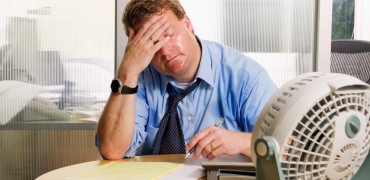The importance of clean and fresh air has never been more evident than in recent times. As we become increasingly aware of the impact of indoor air quality on our health and well-being, the future of ventilation is undergoing significant advancements.
From improved filtration systems to smart air conditioning technologies and enhanced maintenance practices, this article explores the exciting building regulations developments shaping the future of ventilation and its critical role in creating healthier indoor environments.
Proposed updates to Part F of the Building Regulations reflect a growing recognition of indoor air quality as vital for occupant health.
And higher ventilation levels are just the start. The proposals also recognise the risks of air pollution, both outdoors and indoors.
The proposed updates of Part F are included in the government’s Future Homes Standard and Future Building Standard publications.
The proposals put forward include required monitoring for air quality in non-dwellings, filtration of recirculated air and the ability to offer higher ventilation rates if required.
This will be a significant change from current requirements
Engineering challenge
Crucially, the proposals recognise that our outdoor air is not necessarily ‘fresh air’.
As a result, treating ventilation as a means to introduce more outdoor air into an occupied space is not always beneficial to occupants.
The proposed new Part F for non-dwellings states that an important characteristic of building ventilation is that it supplies “a minimum level of outdoor air for occupant’s health”.
But this is balanced with a proposed requirement that ventilation systems “minimise the ingress” of outdoor pollutants.
The challenge for engineers is therefore not only how to filter pollutants from outdoor air, but also how to introduce that air to the building without increasing energy use for heating, for example.
Avoiding energy loss
Air changes in a building are the second-largest source of energy losses (after the building fabric).
But the proposed new Part F requires higher ventilation rates, as well as ventilation in areas which are usually unoccupied such as corridors and stairways.
This will be a significant change from current requirements.
Additionally, each office must be equipped with the ability to increase the general ventilation of each occupied room by 50%.
The objective is to have the ability to reduce the spread of airborne infection rates should that be necessary.
A simple solution
How to balance higher ventilation rates with energy efficiency? Mechanical ventilation with heat recovery (MVHR) offers one solution.
MVHR allows the stale air in a space to be removed, but captures heat energy from the outgoing air to heat up the incoming air.
It does this without mixing the airflows (another requirement of Part F).
The most effective systems can recover between 80% and 90% of the heat energy, which would otherwise be wasted.
Air filtration systems
While ventilation will always be the backbone of delivering good IAQ, air conditioning and filtration can also be used to good effect.
For example, there are modern air conditioning filtration options available that can be retrofitted (in some cases) to support good indoor air quality.
For example, electrostatic filters which offer a modern approach to cleaning indoor air. An example of this technology is the Mitsubishi Electric Plasma Quad Connect.
The technology uses electrostatic filtration to neutralise six key pollutants: viruses, bacteria, allergens, dust, mould and PM 2.5 and larger.
The filter works like an electric curtain. As polluted air enters the indoor unit, it produces plasma to inhibit viruses and bacteria while also breaking down allergens, dust and mould. In a second stage, dust and PM 2.5 are electrically charged and removed with a strong electrical field.
A fundamental first step
Maintenance of ventilation and filtration systems is vital for long-term performance and good air quality.
As a minimum, manufacturers guidelines should be followed. However, there is additional guidance from organisations such as the Building Engineering Services Association (BESA) and the Chartered Institution of Building Services Engineers (CIBSE).
Getting indoor air quality right is more important than ever before.
People want to feel safe and healthy in their workplaces and homes, so getting the basics of ventilation and air conditioning right, along with the most appropriate filtration, is a fundamental first step.
David Hammond is a Business Development Manager


